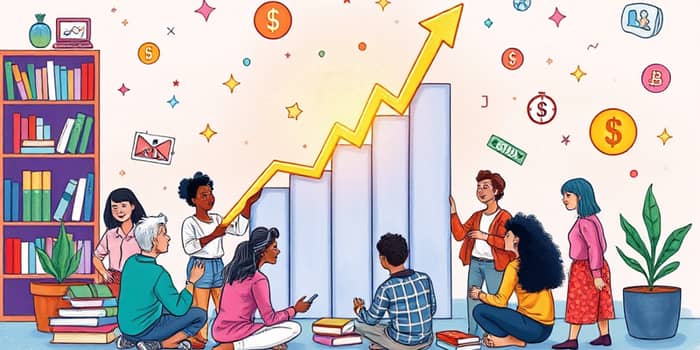Understanding how money works is not just a skill—it’s a pathway to independence, security, and confidence. By mastering the principles of personal finance, individuals can steer their futures with clarity and purpose.
Financial literacy bridges the gap between uncertainty and opportunity, offering tools to transform aspirations into reality.
What is Financial Literacy?
At its core, financial literacy is the set of skills required to manage income, spending, and investments in a balanced and informed way. It encompasses:
- Budgeting effectively to cover expenses and goals
- Saving strategically for emergencies and milestones
- Investing wisely to build long-term wealth
- Managing risks through insurance and diversification
- Planning for retirement to secure golden years
These competencies empower people to navigate complex financial choices, reduce stress, and achieve lasting stability.
The Global Landscape of Financial Knowledge
Despite rapid economic growth in many regions, only 33% of adults worldwide demonstrate adequate financial understanding. The Standard & Poor’s Global Financial Literacy Survey, covering over 150,000 adults in more than 140 nations, revealed that basic concepts like interest rates, compounding, inflation, and risk diversification remain elusive for most.
In developed economies, literacy rates can exceed 60%, while in emerging regions they often fall below 25%. In the Netherlands, for example, correctly answering one additional financial question boosts the likelihood of retirement planning by 10 percentage points—an illustration of the tangible benefits of small gains in literacy.
The Transformative Benefits of Financial Literacy
Being financially literate fosters smart financial decision-making and resilience against unforeseen setbacks. Those who grasp key principles are 72% more likely to save regularly and 50% more inclined to compare prices before purchasing.
Consider Maria, a single mother who learned to track her expenses and build an emergency fund. Within a year, she eliminated high-interest debt, opened a retirement account, and even started investing in a low-cost index fund. Her peace of mind and growing nest egg illustrate how knowledge transforms lives.
- Improved budgeting leads to reduced stress
- Consistent saving builds financial confidence
- Informed investing enhances wealth growth
- Prudent risk management safeguards against emergencies
These outcomes extend beyond individuals: financially stable families contribute to more robust communities and healthier economies.
Measurable Impacts of Education Programs
Research shows that well-designed financial education can achieve a large impact on knowledge and medium impact on behavior. Meta-analyses indicate these effects are three to five times larger than previously estimated, especially when interventions include follow-up sessions.
Employees around age 40 who participate in sustained programs often see a nearly 10% increase in retirement savings. This demonstrates the cost-effective educational follow-up sessions that sustain momentum and reinforce learning.
Bridging Barriers and Closing Gaps
Barriers to financial literacy include socio-economic disparities, gender gaps, and lack of family support. Only 61% of boys feel confident making online transfers compared to 52% of girls, and students from wealthier backgrounds consistently outperform peers with fewer resources.
- Limited access to quality financial education in low-income areas
- Gender differences in confidence with digital financial tools
- Insufficient discussion of money matters at home
- Language and cultural barriers in program delivery
Family conversations about finances can close 12% of the performance gap among students. Encouraging open dialogue and leveraging technology are essential steps toward inclusive literacy.
Strategies to Build Financial Literacy
Effective advancement of financial skills requires a multi-pronged approach that engages individuals at every life stage:
- Integrate personal finance into school curricula early on
- Offer workplace seminars with actionable takeaways
- Use mobile apps and online platforms for interactive learning
- Promote family workshops to foster open money conversations
- Implement national policies that support long-term follow-up
Technology, when accessible, accelerates learning through simulations, quizzes, and real-time feedback. Collaborative programs that involve parents, educators, and financial professionals create a supportive environment for sustainable growth.
A Call to Action
Financial literacy is not a luxury; it is a cornerstone of personal and societal well-being. Each of us—individuals, families, schools, and governments—must champion and invest in education that equips people to:
- Set clear financial goals and track progress
- Make informed decisions in moments of uncertainty
- Build resilient savings and investment portfolios
- Plan confidently for retirement and life’s milestones
By prioritizing financial education at every age, we can close gaps, reduce anxiety, and unlock the full potential of millions. Start today by exploring resources in your community, sharing knowledge with loved ones, and advocating for programs that sustain lifelong learning. In doing so, you empower not only yourself but generations to come.
References










